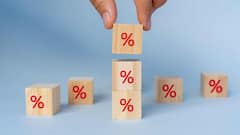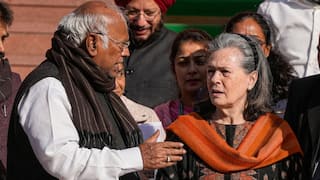Gold Loan Projection 2023: Demand For Yellow Metal To Stay Steady, Technology To Drive Gold Loans
The adoption of digital technology in the past few years has aided the growth of the gold loan market offering benefits to both consumers and service providers

Given that gold is viewed as a good risk-hedger, economic downturn typically favours its price. The demand for gold is expected to stay steady in 2023, despite all the uncertainty surrounding central banks’ efforts to fight high inflation by raising interest rates and concerns about a recession.
Due to stronger price realisations, the uptake of gold loans climbed by more than twice as much in the first quarter of 2022, going from Rs 608 crore to Rs 1,333 crore, according to the Finance Industry Development Council (FIDC). Greater public awareness and a rise in active participation in the continuing digital transformation because of the Covid-19 outbreak were the driving forces behind this phenomenal hike of 120 per cent.
Gold loans expanded in 2022
This trend carried well into the following quarters of the financial year, as the festive and holiday seasons arrived and the need for additional credit made itself evident for millions of people across the country. The market for personal loans charted a growth of 10 per cent 12 per cent in 2022 while gold loans expanded five times as quickly.
As of July 2022, State Bank of India (SBI), the country’s largest lender, reported a 24 per cent market share in gold loans across the industry, crossing the Rs. 1 lakh crore mark for the institution.
According to a survey by the Indian Gold Policy Centre (IGPC), middle-income households consumed an average of 56 per cent of the entire volume of gold sold in the country in the last five years. FIDC reported an increase of 102 per cent between 2019 and 2022 for gold loan disbursals, from Rs. 2,426.5 crore in 2019-2020 to Rs. 4,969.28 crore in 2021-2022. Data from the Reserve Bank of India (RBI) showed a total of Rs. 73,752 crores issued in loans by banks against gold jewellery in May alone.
Digital technology to drive gold loan in 2023
The adoption of digital technology in the past few years has aided the growth of the gold loan market, introducing several advantages to both consumers and service providers. Low-income households, unbanked customers, MSMEs and SMEs resorted to gold loans in challenging times during the pandemic, and ever since, gold loans have emerged as a haven for many. Moreover, millennials have been keen on investing in the yellow metal, adding digital gold, ETFs, SGBs and gold-oriented mutual funds to their portfolios.
The surge in the uptake of gold loans has also been driven by how it compares against personal loans, or overdrafts against FDs. Compared to personal loans, the disbursal amounts for gold loans are calculated by financial institutions and NBFCs through the Loan-To-Value ratio, which is used to cap the amount based on the value of the security.
Obtaining an excessive loan amount can be difficult when opting for a personal loan, and the gold itself serves as the security, enabling the borrower to receive a higher amount of money. In 2022, RBI relaxed the LTV ratio for gold loans to 90 per cent, enabling borrowers an opportunity to attain a significant sum, as against the previous 75 per cent.
Furthermore, the interest rate on secured gold loans is defined by the gold lending scheme accessible from market lenders, but borrowers with poor credit scores face high interest rates on unsecured personal loans. Gold loans also come with flexible repayment options, making them a preferable option for many.
Digitalisation and the integration of deep technologies in the finance ecosystem are further leading an evolutionary phase in the development of the gold loan market. The use of digital technologies is allowing financial institutions such as banks and NBFCs to avail loans to borrowers at a much faster rate. In the past few years, the growth of digital payments and e-wallets has intensified drastically in India, paving the way for more sophisticated products like gold-secured credit cards and gold wallets.
Budget likely to push partnerships between banks and gold loan companies
In Budget 2023, it is also anticipated that the government will likely take steps to encourage partnerships and collaborations between banks and gold loan companies to promote financial inclusion for underserved communities in the country.
According to estimates, a total of 25,000 kilogram tonnes of idle gold is held by Indian households, which could result in becoming the most preferred method for acquiring loans to smooth consumption, make down payments, manage working capital, or even for emergencies and personal goal fulfilments.
Looking back upon the year gone by, the exceptional performance of the gold loan market, aided in part by the integration of technology, and in part by government policies, poses a bright future for the country’s economy.
Rajesh Shet is a co-founder and CEO of gold loan aggregator platform, SahiBandhu.
[Disclaimer: The opinions, beliefs, and views expressed by the various authors and forum participants on this website are personal and do not reflect the opinions, beliefs, and views of ABP News Network Pvt Ltd.]
Trending News
Top Headlines






































